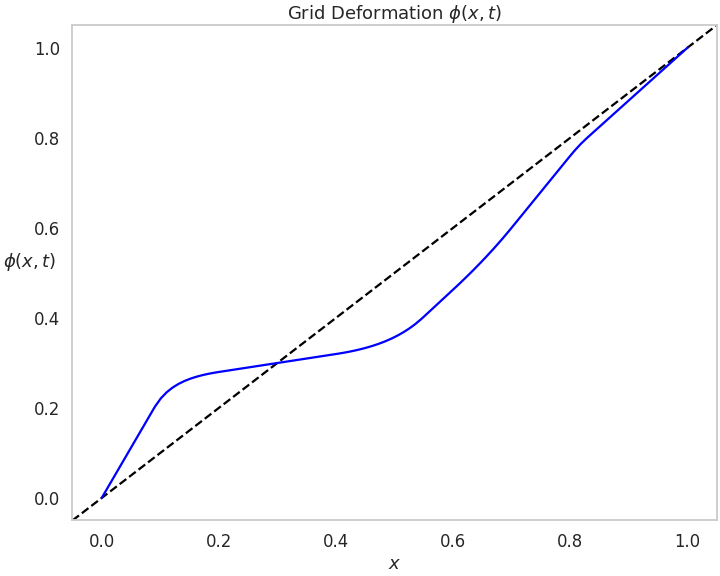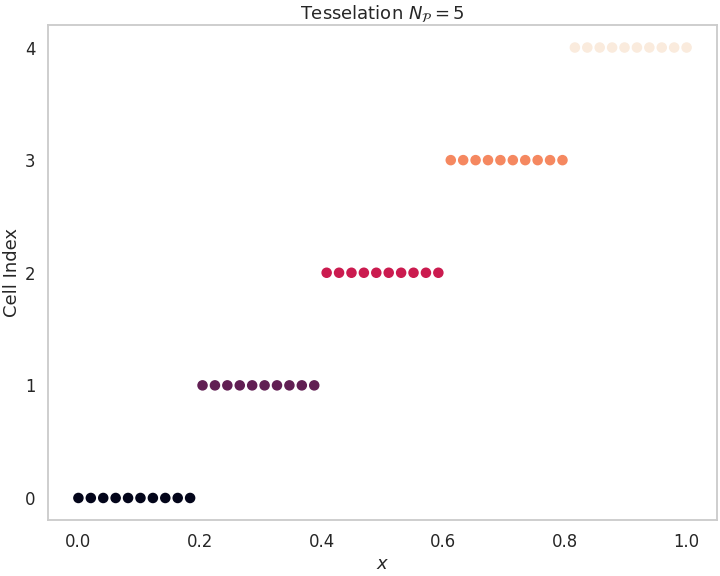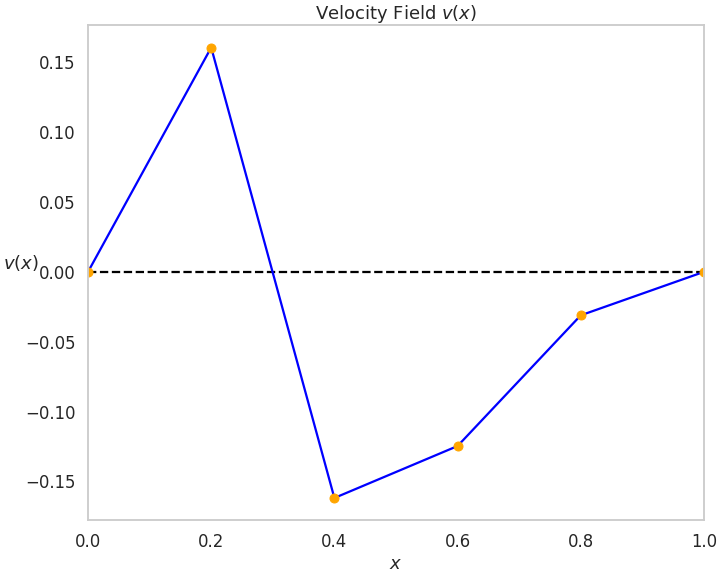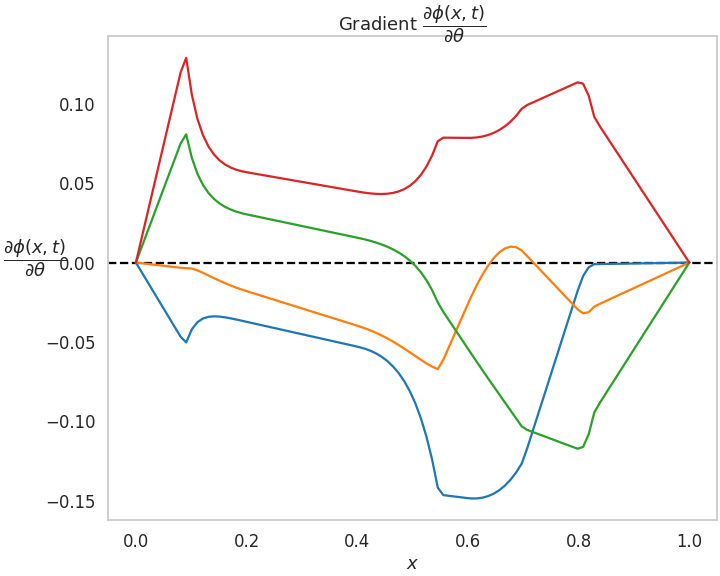
Finite-dimensional spaces of simple, fast, and highly-expressive diffeomorphisms derived from parametric, continuously-defined, velocity fields in Numpy and Pytorch







Quick Start
difw is a fast and open source library to compute fast and highly-expressive diffeomorphisms derived from parametric, continuously-defined, velocity fields in Numpy and Pytorch.
This documentation contains a user-guide (including installation procedure and basic usage of the library), an API Reference, as well as a detailed example. difw is released under the MIT License.
Finally, if you use difw in a scientific publication, we would appreciate citations.
Getting Started
The following code transforms a regular grid using a diffeomorphic curve parametrized with \(\theta\):
# Import difw library
import difw
# Transformation instance
T = difw.Cpab(tess_size=5, backend="numpy", device="cpu", zero_boundary=True, basis="qr")
# Generate grid
grid = T.uniform_meshgrid(100)
# Transformation parameters
theta = T.identity(epsilon=1)
# Transform grid
grid_t = T.transform_grid(grid, theta)

In this example, the tesselation is composed of 5 intervals, and the zero_boundary condition set to True constraints the velocity at the tesselation boundary (in this case, at x=0 and x=1). The regular grid has 100 equally spaced points.
T.visualize_tesselation()

The velocity field is formed by a continuous piecewise affine function defined over 5 intervals. The parameters \(\theta\) represent a basis of the null space for all continuous piecewise affine functions composed of 5 intervals. In this case, we have used the QR decomposition to build the basis. See the API documentation for more details about the transformation options.
Taking into account the zero velocity constraints at the boundary, only 4 dimensions or degree of freedom are left to play with, and that indeed is the dimensionality of \(\theta\), a vector of 4 values.
T.visualize_velocity(theta)

We can visualize the generated transformation based on the parameters \(\theta\):
T.visualize_deformgrid(theta)

In addition, for optimization tasks, it is useful to obtain the gradient of the transformation with respect to parameters \(\theta\). The gradient function can be obtained in closed-form solution. There are 4 different functions, one per dimension in \(\theta\):
T.visualize_gradient(theta)

Installation
As the compiled difw package is hosted on the Python Package Index (PyPI) you can easily install it with pip.
To install difw, run this command in your terminal of choice:
$ pip install difw
or, alternatively:
$ python -m pip install difw
If you want to get difw’s latest version, you can refer to the repository hosted at github:
python -m pip install https://github.com/imartinezl/difw/archive/master.zip
Environment Setup
Requirements
difw builds on numpy, torch, scipy, ninja, and matplotlib libraries.
Python 3
To find out which version of python you have, open a terminal window and try the following command:
$ python3 --version
Python 3.6.9
If you have python3 on your machine, then this command should respond with a version number. If you do not have python3 installed, follow these instructions.
Pip
pip is the reference Python package manager. It’s used to install and update packages. In case pip is not installed in your OS, follow these procedure.
Virtual Environment
venv creates a “virtual” isolated Python installation and installs packages into that virtual installation. It is always recommended to use a virtual environment while developing Python applications. To create a virtual environment, go to your project’s directory and run venv.
$ python3 -m venv env
Before you can start installing or using packages in your virtual environment you’ll need to activate it.
$ source env/bin/activate
Source Code
difw is developed on GitHub, where the code is always available.
You can either clone the public repository:
$ git clone git://github.com/imartinezl/difw.git
Or, download the tarball:
$ curl -OL https://github.com/imartinezl/difw/tarball/main
# optionally, zipball is also available (for Windows users).
Once you have a copy of the source, you can embed it in your own Python package, or install it into your site-packages easily:
$ cd difw
$ python -m pip install .